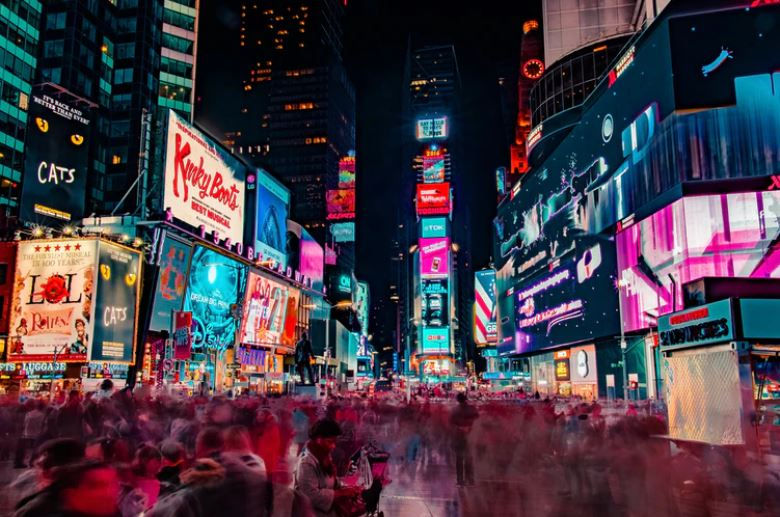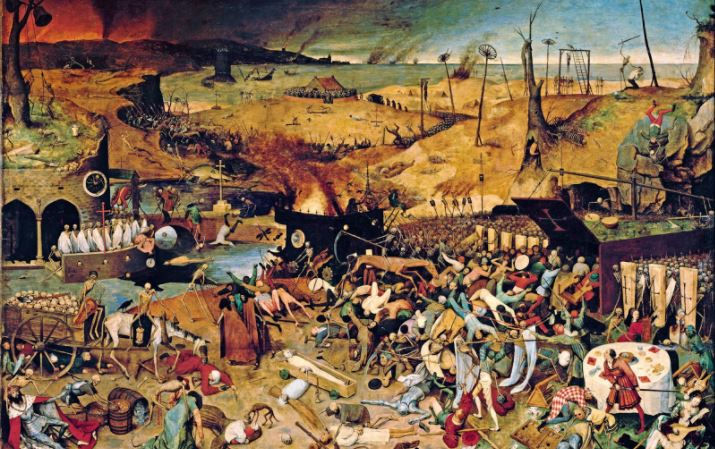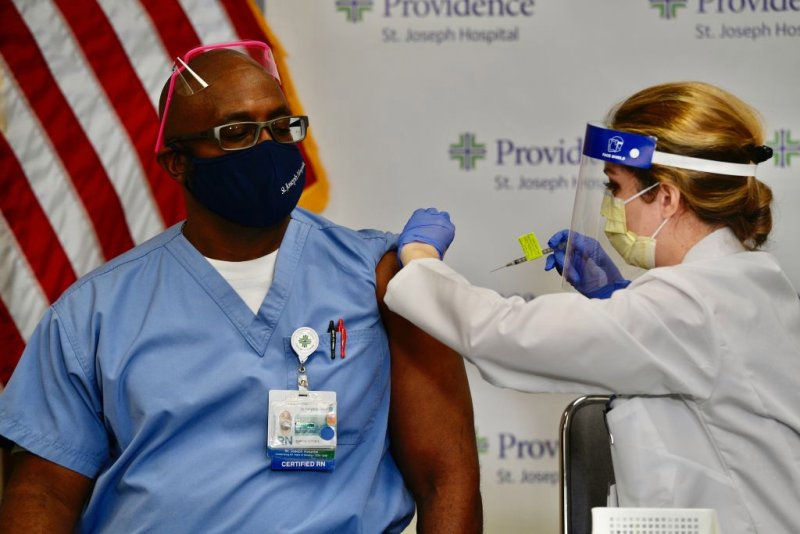Are we in for the roaring 20s? What to look out for based on past pandemics
- Maciek Grzymkowski

- Jun 2, 2021
- 6 min read

The COVID-19 pandemic is slowly, but surely coming to an end. The international vaccination efforts are effectively decreasing infection rates in places where most of the population is inoculated. Medical experts in certain countries, such as Israel, are claiming that their nations are close to achieving “herd immunity”. This term is used to describe populations where enough people are protected against certain diseases to stop their spread. In the case of COVID-19, the herd immunity requirement is estimated to be around 65-70% [1]. Other regions of the world are nowhere near achieving the kind of comfort and security that widely-vaccinated societies can. This is most evident in India, where the disease continues to ravage the population, and the third wave is proving to be the most deadly one in the country. The number of cases seem to have peaked on May 6th, with 414,000 reported new cases [2].
Globally speaking, however, the immediate threat posed by the SARS-CoV-2 virus is subsiding. As of the 31st of May, 1,891,015,959 doses of coronavirus vaccines have been administered (according to the Johns Hopkins University’s COVID-19 data repository), with the majority of countries having completed the vaccination process for the most vulnerable members of the society. Naturally, that begs a completely different question: how are societies going to deal with the aftermath of this pandemic? Will the global economy return to its previous shape, or will we experience significant changes in how finance is conducted around the world? How are people going to release all of the built-up tension accumulated over a year and a half spent mostly at home? It’s impossible to definitively answer these questions, but we can draw some educated guesses based on the pandemics of the past and their consequences.
Black Death (1347-1351): Addressing the Wealth Gap

The Black Death was arguably the deadliest disease the human race had to deal with so far. One might argue that with the medical knowledge and technology that we have today, the bubonic plague would not turn out to be a big deal, but back in the 14th century, it was a tragedy on an unimaginable scale. It killed an estimated 200 million people, eradicating about one-third of Europe’s population in the process [3]. Towards the end of it, unparalleled social, economic, and political changes took place.
Due to the differences in the advancement of human civilization, it is difficult to draw parallels between the COVID-19 pandemic and the Black Death. One of the more interesting developments that transpired as the medieval plague was nearing an end, were the changes that benefitted the European peasant population. The great population reduction led to lower land prices, as well as bigger availability of food for the commoners. Social mobility has drastically increased. The lucky peasants who survived the plague enjoyed higher wages and the ability to move up the social ladder. It did not last long however, and as populations started growing again, oppressive laws were introduced to prevent the ascension of the working class.
Similarly to the Black Plague, the COVID-19 pandemic also had a tremendous impact on economic inequality. However, the main difference is that in the 14th century, lower classes (albeit for a very brief period of time) got to enjoy a slightly fairer share of the pie. Over the course of 2020, the global economic situation has pushed the richest individuals and entities even further away from the middle and lower classes. According to some reports, the world’s billionaires have gotten 54% richer during the pandemic, and a lot of them profited directly off of it. Just the net worth of Jeff Bezos has skyrocketed by a whopping $65 billion between March 2020 ($113 billion), and March 2021 ($178 billion) [4].
Are policymakers nowadays capable of introducing legislation that would level the playing field and help the lower classes recover financially after the pandemic? If it was done seven hundred years ago to benefit the rich, it can be done now to save the less-affluent, especially with so much more wealth to go around, ideas of “wealth taxes” and redefining fiscal policies having already made their way to the mainstream media [5].
The Columbian Exchange (1492-1700s): The Danger of Novel Bugs

While the term “Columbian exchange” refers to the general transfer of human populations, animals, plants, and culture between Europe, Africa, and the Americas, it also involves the exchange of bacteria and viruses. Diseases that were previously alien to the native populations of the Americas that spread across these continents, killing dozens of millions of people and livestock along the way. Smallpox was particularly nasty in that regard, as the indigenous people had no immunity to that virus, leading to the wipe-out of over 90% of the Americas’ native population.
One of the most obvious effects of smallpox spreading to the Americas is the fact that it enabled the European colonizers to take over Native American land and impose themselves. While the Columbian Exchange was not a pandemic in itself, the exchange of viruses and diseases that occurred as a part of it fits the definition all too well. Much like Native Americans with regard to the smallpox virus, so have we been completely blindsided by SARS-CoV-2, its effects on the human body, and the way it spreads. It was a completely novel disease, and it took the international community months before establishing the right course of action to contain it.
Thankfully, COVID-19 is not as deadly as smallpox was back in the 15th century, but it would be foolish to hope that it is the only disease caused by a novel virus or bacteria that humanity will encounter in this century. COVID may be a zoonotic disease, but scientists agree that the next global public health emergency is likely to be caused by the microbes being released as a result of melting permafrost [6]. Some of these life forms have been deeply frozen for thousands of years, meaning that the organisms of humans alive today have no way of recognizing them and forming any sort of defense against the potential damage they could do to our bodies. As evidenced by the reaction to COVID, our healthcare systems and policymakers are not ready to face these kinds of novel threats. These lines of defense need to be brought up to speed as soon as possible, especially with the permafrost melt rates having more than doubled within the last five years [7]. We can’t afford another smallpox, and it is much too late to stop the melting of glaciers.
Spanish Flu (1918-1919): The Roaring Twenties

The Black Death and smallpox, while extremely tragic and impactful, have occurred in a completely different reality than the one we’re living in now. International trade was largely limited to interactions with bordering nations, and states were nowhere near as interconnected and dependent on each other as they are today. Drawing parallels between these epidemics and COVID-19 may lead to valuable conclusions, but these conclusions will inevitably be shrouded by a thick cloud of speculation.
This is not the case when referring to the Spanish flu pandemic of the late 1910s, especially the more developed parts of the globe, like the United States or Europe. Much like today, the stock market was soaring and new technologies were transforming the way people conducted their day-to-day lives. Once the threat was dealt with, relative economic prosperity, all of the pent-up frustration, and self-imposed restrictions have led to an “explosion of demand”, as well as increased spending, both by individuals and corporate entities.
The similarities to these final stages of the COVID-19 pandemic are striking. While it is true that, in general, people have been making much less money during this public health crisis, they have also become more stringent with it. According to financial analysts at the world’s top banks, the majority of consumers continue to make savings deposits, and borrowing rates have plummeted [8]. All of this purchasing power combined with the burning desire to “go back to normal” can indeed lead to a period similar to the early 1920s in the United States. It is not difficult to imagine the demand for anything that could be considered a “good time” to skyrocket in the upcoming years.
No Reason to Celebrate
The international scientific community’s efforts to develop and distribute COVID-19 vaccines to people all around the globe in such a short period of time are certainly great achievements and deserve to be lauded as such. For governments and policymakers all around the world, ending the pandemic is just the beginning.
Should the international community rest on its laurels after “defeating” a disease they have failed to contain in the first place, they are doomed to repeat the mistakes of the past. Yes, we might be headed towards a period of all-round positivity, hedonism, and excitement brought forth by the introduction of new, groundbreaking technologies. Yes, people are bound to overindulge and overspend after two years of unprecedented self-restraint. We need to remember however, that after the Roaring 20s came the Great Depression, and shortly after that, World War II.
A soaring stock market and rapid technological progress are not the only similarities between the early 20th and 21st century. Some of the darker parallels include emerging international rivalries and increased civil unrest in certain parts of the world, which gave rise to some of the most horrendous authoritarian regimes in history. Their continued breaking of international norms was tolerated for years, all in the name of maintaining stability and economic cooperation, right until the international community could no longer turn a blind eye to what was happening, which was already too late for a peaceful resolution. As the world leaves COVID-19 behind, it is headed towards a decisive period that has the potential to shape the way this century will play out. The next decade will determine whether we are really headed for the new normal or the same old tragedy.

A very interesting article. But it seems that COVID-19 it's far from over for many places, there aren't enough vaccines for all countries.